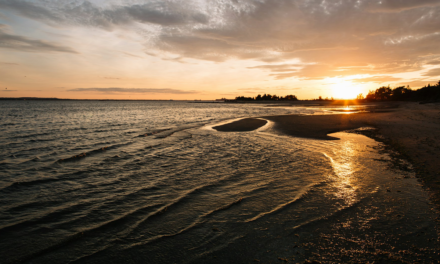Los Angeles, a city synonymous with glitz and glamour, became a pivotal part of my life in the early 2010s while launching a singing career.
Beyond the Hollywood sign and the Walk of Fame lies a vast metropolis, a sprawling valley of dreams, cultures, and complex history. From the vocal studios in Glendora to the vibrant streets of Long Beach, my experiences in the City of Angels have been as diverse as the city itself.
Let’s pull back the curtain on the history of Los Angeles and the myriad of stories that define it.
Table of Contents
The Foundations: From Indigenous Lands to Spanish Mission
Tongva Tribe and Early Settlement
Long before it was a metropolis, the Los Angeles area was home to the Tongva people.
Their deep connection with the land and sea laid the beginnings and very foundation for a rich cultural heritage.
- The Tongva people practiced sustainable fishing, hunting, and gathering.
- They developed complex societies with deep spiritual ties to their environment.
- The arrival of the Spanish explorers that came in the 18th century marked the beginning of significant changes.
Spanish Exploration and Mission System
In 1781, Spanish settlers established the city as El Pueblo de Nuestra Señora la Reina de los Ángeles.
The mission system that followed drastically altered the indigenous way of life, setting the stage for the city’s evolution.
- Spanish missions aimed to convert the indigenous population and integrate them into colonial society.
- New agricultural practices and livestock were introduced, altering the local economy.
- The Spanish era laid the foundation for future development in the region.
The Mexican Era and American Acquisition
Mexican Rule and Land Grants
After Mexico gained independence from Spain, Los Angeles became a part of Mexican territory.
The Mexican government issued land grants, encouraging settlement and agricultural development.
- Ranchos were established, transforming the landscape and economy.
- Los Angeles served as a key trading post between Mexico and Alta California.
- The city began to grow as a cultural and economic center under Mexican rule.
American Annexation and Growth
The conclusion of the Mexican-American War in 1848 saw California—and Los Angeles—annexed to the United States.
This transition marked a new chapter in the city’s history.
- The Treaty of Guadalupe Hidalgo formalized the annexation.
- American settlers arrived, bringing new economic opportunities and challenges.
- Los Angeles started to evolve into a modern American city.
Boomtown: The Rise of Modern Los Angeles
Oil Discovery and Economic Transformation
The discovery of oil and the completion of the transcontinental railroad ignited rapid growth in the early 20th century.
Los Angeles transformed from a sleepy pueblo into a booming urban center, attracting entrepreneurs and those seeking a new start.
- The oil boom attracted investment and spurred industrial growth.
- Railroads connected Los Angeles to major markets, facilitating trade and migration.
- The population surged, leading to urban expansion and development.
Infrastructure and Urbanization
The rapid growth required significant infrastructure development, reshaping the city’s landscape.
- Roads, bridges, and public buildings started to be constructed to support the growing population.
- Residential neighborhoods and commercial districts expanded rapidly.
- Los Angeles began to emerge as a major metropolitan area.
Hollywood: The Birth of the Silver Screen
The Rise of the Film Industry
The birth of Hollywood as the heart of the film industry was more than a turning point—it was a cultural revolution that redefined Los Angeles.
The city beckoned filmmakers with its near-perfect weather, varied landscapes, and the promise of a fresh start away from the established norms of the East Coast.
- In the 1910s, Hollywood saw its first movie studios emerge.
- By the 1920s, it was the epicenter of American cinema.
- Iconic studios like Paramount Pictures, Warner Bros., and MGM set up shop, creating the most recognizable and influential film hub on the planet.
The Golden Age of Hollywood
The era of silent films gave way to the Golden Age of indelible Hollywood in the 1930s and 1940s, a time when the narratives on screen became intertwined with the lives of millions worldwide.
- Aspiring actors, directors, writers, and craftsmen flocked to the city.
- The Hollywood sign became a symbol of the city’s new identity.
- Hollywood’s elite created a fascination with celebrity culture that persists today.
Challenges and Evolution
The industry faced its share of challenges, including the McCarthy era’s fear and censorship, but it continued to grow and adapt.
- The introduction of television in the mid-20th century expanded LA’s entertainment industry.
- Hollywood embraced new technologies and storytelling methods in the digital age.
- Los Angeles and Hollywood have become synonymous, shaping global popular culture.
Golden Age to Turbulence: Mid-Century Los Angeles
Post-War Prosperity and Challenges
The mid-20th century marked a period of significant transformation for Los Angeles.
The post-war era saw a burgeoning middle class fueled by the defense and aerospace industries, making the California dream accessible to more people than ever before.
- The city’s economy thrived with industries like defense and aerospace.
- Urban expansion led to complex social and environmental challenges.
- Smog and air pollution prompted groundbreaking environmental regulations.
Social Unrest and Resilience
Los Angeles became a focal point for the civil rights movement, with racial tensions culminating in the Watts Riots of 1965.
- The riots highlighted deep-seated social and economic disparities.
- The city took proactive steps to address these issues through social reform.
- Los Angeles navigated these times with resilience and adaptability.
Diversity in the Valley: The Fabric of Communities
A Mosaic of Cultures
Los Angeles is more than just its city center.
The San Fernando Valley and areas like Burbank, Glendora, and Long Beach are microcosms of the city’s diversity. Each community contributes its unique flavor to the rich stew that is Los Angeles.
- Diverse communities enrich the city’s cultural landscape.
- Neighborhoods offer distinct experiences and traditions.
- The fabric of Los Angeles is woven from the threads of many cultures.
Contributions to Culture and Economy
The various communities within Los Angeles play crucial roles in shaping the city’s identity and economic vitality.
- Local businesses and cultural institutions thrive across the city.
- The arts, music, and culinary scenes reflect the city’s diversity.
- Each area contributes to the overall vibrancy and dynamism of Los Angeles.
Modern Times: Reinvention and Resilience
A Global Hub
Today, Los Angeles is a worldwide center for entertainment, technology, and business.
Despite facing issues like homelessness and traffic, the city continually reinvents itself, striving towards a brighter future.
- The tech industry has flourished, making LA a hub for innovation.
- Sustainable practices and green initiatives are increasingly prioritized.
- Los Angeles remains a destination for dreamers and innovators.
Addressing Modern Challenges
The city acknowledges its challenges and actively works to address them through community programs and policy initiatives.
- Efforts to combat homelessness include housing and support services.
- Public transportation projects aim to reduce traffic congestion.
- Community engagement and inclusivity are key focuses for the city’s future.
Q&A: Behind the Scenes of Los Angeles’ Past
What has shaped Los Angeles’ identity over the years?
Los Angeles’ identity has been shaped by its indigenous roots, its period under Spanish and then Mexican rule, the rise of the entertainment industry, and its status as a melting pot of cultures.
How did the entertainment industry impact the growth of Los Angeles?
The entertainment industry turned Los Angeles into a global cultural icon, fueling its economy, shaping its landscape with studios and theaters, and drawing people from all over the world.
In what ways have the diverse communities of Los Angeles Valley contributed to the city’s culture?
The communities of the Los Angeles Valley, with their distinct cultural heritages, have contributed to the city’s music, food, art, and lifestyle, making it a rich mosaic of global cultures.
How does Los Angeles reconcile its glamorous image with the challenges it faces?
Los Angeles acknowledges its challenges, including socioeconomic disparities and urban issues, by investing in community programs, fostering innovation, and promoting inclusivity alongside its glamorous image.
The Continuing Saga of Los Angeles
As I reflect on my days and nights spent across Los Angeles, it’s clear the city is a place of contrasts and complexities.
It’s a landscape where dreams are made and sometimes lost, but always against a backdrop of relentless hope and reinvention. Los Angeles invites us to explore its storied boulevards and hidden alleys, to uncover the narratives woven into its very core.
What new chapters will the future hold for this dynamic city, and how will the community’s stories of resilience and diversity continue to shape Los Angeles’ identity?
As this city sails forward, it invites us all to be part of its ongoing, vibrant history.




